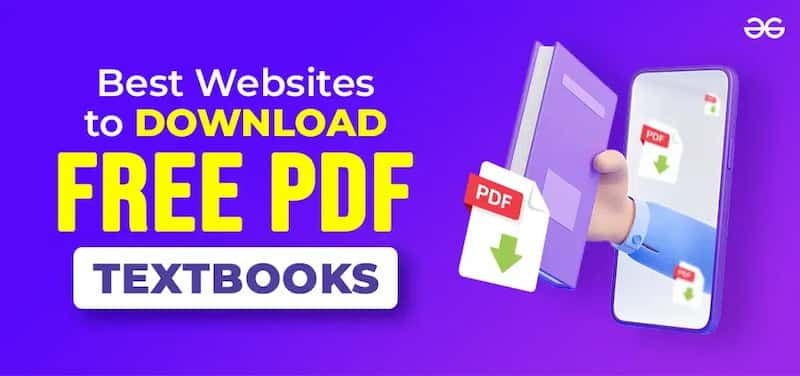This article explores the best free textbook websites. They are a one-stop shop for ebooks. They help students and lifelong learners access info without breaking the bank.
Education is valuable, but textbook costs often burden students. Many students spend hundreds, even thousands, on textbooks each semester. This trend shows no signs of slowing down. To combat these costs, many students are now turning to free textbook websites, which offer a growing library of resources at no cost.
Why Free Textbook Websites Matter
As textbook costs rise, students and educators are pushing for open educational resources (OER) and free ebook platforms. According to research, the average college student in the U.S. spends between $600 and $1,200 in textbooks per year. Given that nearly 65% of students opt to skip buying textbooks because of cost, free textbook websites offer a necessary and accessible alternative for learning.
Many STEM, social science, and humanities students can now access a vast array of resources online. These websites offer free digital copies of textbooks and academic papers. They often get contributions from universities, nonprofits, and authors. These groups aim to reduce educational inequities.
Top Free Textbook Websites to Consider
Here’s a list of some of the most popular and reliable free textbook websites available today. Each offers unique benefits and a vast selection of textbooks across multiple disciplines.
1. OpenStax
Overview: OpenStax is a nonprofit educational initiative based at Rice University. This platform offers free, peer-reviewed, openly licensed textbooks. They cover physics, biology, and economics. OpenStax, with high-quality PDFs, serves both college and high school students.
Unique Features:
-
Books are available for free online and in a print-on-demand format.
-
Content is regularly updated and peer-reviewed, ensuring high academic standards.
-
Instructors can customize the textbooks to suit their course requirements.
Case Study: A University of Georgia study found that students who used OpenStax books saved about $3.6 million over two years. As a result, OpenStax has become a trusted partner in the movement to make education more affordable.
2. Project Gutenberg
Overview: Project Gutenberg is one of the oldest digital libraries, with over 60,000 free ebooks. It mainly has classic literature and public domain works. It also hosts textbooks on history, science, and language.
Unique Features:
-
Offers a broad range of formats, including Kindle, ePub, and HTML.
-
Includes options to download or read books online.
-
Perfect for students studying literature or subjects with a focus on historical works.
Case Study: Project Gutenberg was used in a high school English program. It helped students access classic novels and short stories without buying new books. The program saved an average of $150 per student per semester.
3. Google Books
Overview: Google Books is a vast digital library with access to millions of books, including textbooks. Many books are not fully accessible. But, many academic texts and older books are free to read or partially preview.
Unique Features:
-
Powerful search feature that allow for keyword searches within books.
-
Ideal for research and referencing since users can access many academic books.
-
Free, full access to many older books and public domain texts.
Case Study: At a community college, students often used Google Books for history and social science assignments. They used the preview function to access relevant chapters. This resource cut the need for students to buy multiple books for specific chapters or topics.
4. Bookboon
Overview: Bookboon specializes in textbooks and business ebooks. Their main audience is college and university students. They offer free, easy-to-download PDFs of textbooks on topics from engineering and IT to business and economics.
Unique Features:
-
Focus on practical, skills-based books ideal for professional studies.
-
Frequent updates to align with current industry standards.
-
Many engineering and technical books are available.
Case Study: Bookboon has partnered with several European universities. They provide course materials to reduce students’ textbook costs. It’s especially popular with business and engineering students. It has up-to-date, industry-focused content.
5. Library Genesis (LibGen)
Overview: Library Genesis, or LibGen, is a free digital library. It has millions of books and academic articles. It has a vast selection. But, some content may be shared without proper copyright permissions. Therefore, users should exercise caution.
Unique Features:
-
Extensive range of academic texts across diverse subjects.
-
Books are available in multiple formats, such as PDF, ePub, and more.
-
Often includes hard-to-find and specialized textbooks not available elsewhere.
Case Study: A study on textbook costs found many students used LibGen to access texts they couldn’t afford. LibGen’s legality varies. Students should, if possible, seek legal options first.
6. National Emergency Library (Internet Archive)
The Internet Archive’s National Emergency Library has millions of books and texts. Many are educational or scholarly. It provides access to them. It was launched in response to the COVID-19 pandemic. The library still offers valuable resources.
Unique Features:
-
Users can borrow books for a limited time. It’s like a traditional library.
-
Access to older textbooks and editions that may not be in print.
-
Includes resources across disciplines, such as the arts, the sciences, and the humanities.
Case Study: During the pandemic, the National Emergency Library was vital. It helped students and teachers who needed digital access to textbooks. It saw an 88% increase in usage, highlighting the need for accessible digital libraries.
7. Open Textbook Library
The University of Minnesota runs the Open Textbook Library. It provides access to over 1,000 open textbooks. These books cover many subjects. Faculty at schools worldwide use them.
Unique Features:
-
Faculty members review all textbooks to ensure quality.
-
Covers topics from the arts and humanities to business and science.
-
Enables users to download books as PDFs for offline access.
Case Study: At the University of Minnesota, students saved $2 million in textbook costs by using the Open Textbook Library over five years. This platform has helped to support OER initiatives across the U.S.
8. MIT OpenCourseWare (OCW)
Overview: MIT’s OpenCourseWare is a free platform. It shares MIT course content with students worldwide. It’s not a traditional textbook site. It offers course materials, lecture notes, and textbooks for many of its courses, especially in STEM.
Unique Features:
-
High-quality course materials from a leading institution.
-
Offers lecture notes, assignments, and reading lists, along with textbooks.
-
Popular among self-learners and those looking to supplement their coursework.
Case Study: Students and professionals in developing countries use MIT OpenCourseWare to access top-quality educational resources. For example, engineering students in Africa learn a lot. This is because of access to MIT’s tough course materials.
9. Digital Public Library of America (DPLA)
Overview: DPLA offers millions of free texts, images, and videos. DPLA is not just a textbook site. It has a vast library. It includes educational resources for students of all ages.
Unique Features:
-
Offers free access to a wide range of public-domain and freely licensed materials.
-
Content is curated from libraries, museums, and archives across the U.S.
-
Users can find a variety of historical and academic texts.
Case Study: A public university’s history department used DPLA. It allowed students access to historical texts and documents without buying costly primary sources.
Key Benefits of Free Textbook Websites
Free textbook websites provide many advantages to students, instructors, and self-learners. Let’s break down the benefits of utilizing these resources:
-
Cost Savings: Many of these platforms aim to reduce students’ costs. They can save them thousands of dollars over their education.
-
Accessibility: Digital access lets students anywhere download textbooks. This gives remote learners and underserved communities access to quality resources.
-
Diverse Content: The subjects covered are vast. So, students in almost any field can find the materials they need.
-
Environmental Impact: These websites help the environment by reducing printed textbooks. They cut down on paper and printing.
How to Maximize the Use of Free Textbook Websites
Using free textbook websites effectively requires some planning:
-
Search for Specific Topics: Many platforms let users search by topic or author. This makes it easier to find what you need.
-
Use multiple resources: One website might not have everything. So, combine resources from multiple sites to cover your full course syllabus.
-
Check Legitimacy and Licensing: Not all resources are legally shared. Using sites like OpenStax and Project Gutenberg ensures that the content is legal.
Future of Free Textbook Websites
Free textbook websites will probably grow. There is a rising interest in OER and equal education. As more universities adopt open-access policies, free textbook websites could become a primary resource for students worldwide. Governments and schools see the cost savings and accessibility of these sites.
FAQS
Where can I download free PDF textbooks?
Library Genesis, PDF Drive, Textbook Nova
Where can I get PDFs of textbooks?
Library Genesis, PDF Drive, Textbook Nova
How to download PDF books for free?
Use websites like Library Genesis, PDF Drive, or Textbook Nova.
What are some good free online courses for learning new skills?
Coursera, edX, Khan Academy, and Google's Digital Garage are excellent platforms for free online courses.




